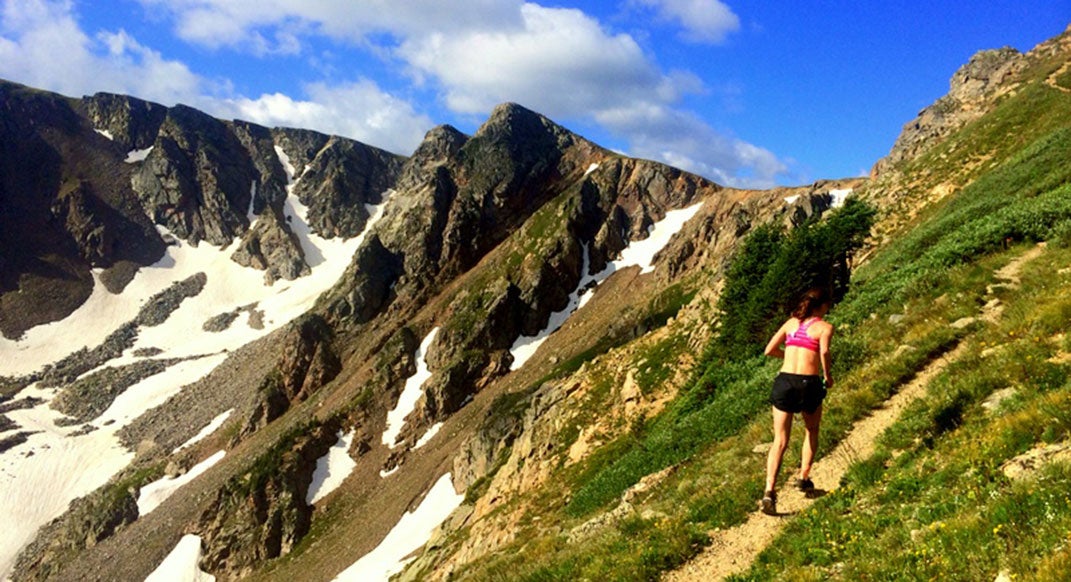The Foolproof Weekly Workout: Corrine’s VO2 Hills

Let’s face it: hard workouts are often stressful. They can be uncomfortable and take a long time. Perhaps worst of all, they can involve remembering numbers of intervals and fractions of time for rest periods. Yes, that’s right—they can even involve math. And if you are anything like me, math is to be avoided at all costs.
For most of us, it’s best to have a simple go-to workout that works well rather than a complicated, time-consuming workout that works perfectly. “Corrine’s VO2 hills” are a great balance because they only take an hour and they spur rapid physiological adaptations. Best of all, they don’t involve (much) math.
Here’s how they work.
The Background
Corrine Malcolm is a graduate student with a busy schedule. On some days, she doesn’t even have time for her beloved post-run donut break. As her coach, I needed to find a workout that balanced physical and mental stress to achieve sustainable progression. “Corrine’s VO2 hills” were the result.
Over the last year, Corrine has done some variation of this workout 20 times as her key weekly effort (mixing in other workouts on some weeks). Using VO2 hills, she won the Cayuga Trails 50 Miler, the 2016 National 50-mile Championship race. Here’s some math for you: 20 VO2 hills workouts + hundreds of donuts = 1 national champion.
The Basis
VO2 hills kick Corrine’s maximum aerobic capacity (her VO2 max) into high gear. And a rising VO2-max tide lifts all aerobic boats. In other words, improving VO2 max can improve performance at all distances and paces, even those far slower than the workout (like 50-mile trail races).
The Workout: 15 minutes easy warm-up; 4 to 8 x 3-minute hills moderately hard; 15-minute easy cool-down
All VO2 hills require is an uphill between one quarter and one half mile. The hill can be any gradient, but 8 percent is ideal.
After a 15-minute warm-up of easy running, run up the hill moderately hard for three minutes. The effort should generally feel moderate at first, progressing to hard near the very end. Note a landmark that approximates where you stop, then run back down to where you started easily.
When you reach the starting point, turn around and run to the landmark moderately hard again, this time without timing yourself (it’s not important how fast you do them, just that the effort is right).
The classic “Corrine’s VO2 hills” workout is 5 x 3 minutes once a week. However, anywhere from four intervals (if you are just getting started or are pressed for time) to 10 intervals (if you are experienced and looking for a key workout 10 days before a big race) works well.
While the workout is simple, it has been the go-to effort for many of the busy elite athletes I coach, including top-five finishers at the North Face 50 Mile, the Lake Sonoma 50 Mile, the Ice Age 50 Mile and the Way Too Cool 50K.
Now go earn your donuts!
David Roche partners with runners of all abilities through his coaching service, Some Work, All Play. With Megan Roche, M.D., he hosts the Some Work, All Play podcast on running (and other things), and they wrote a book called The Happy Runner.